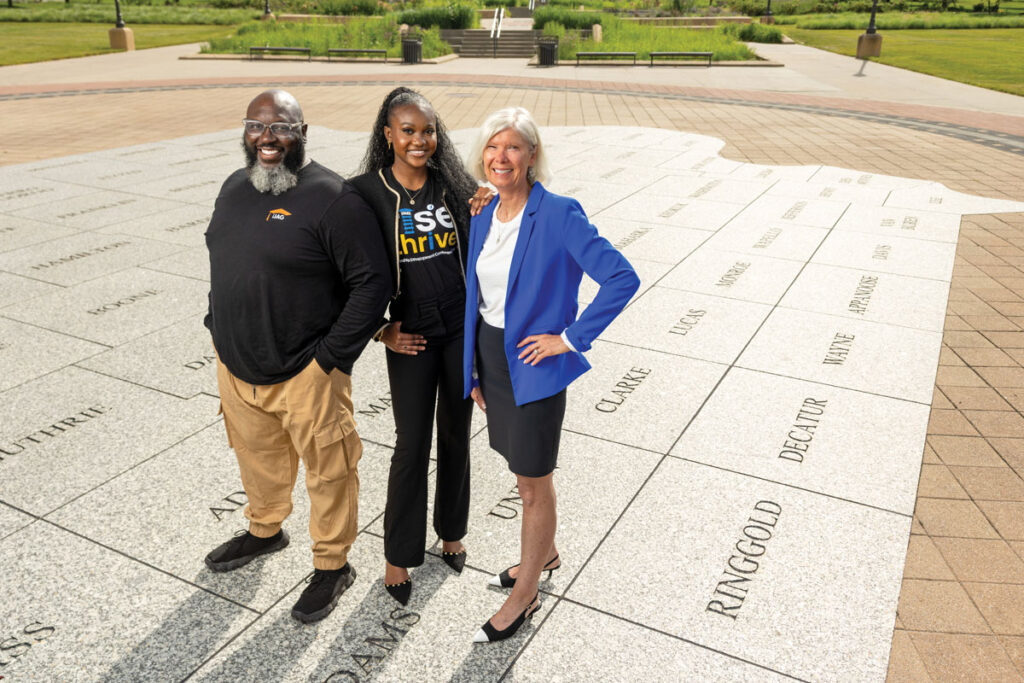Guest commentary: Maybe you shouldn’t always ‘start with why’ when making strategic decisions

Submitted by Carl Vieregger, associate professor of management, Drake University
If you are like most executives and managers I know, you’re familiar with Simon Sinek’s bestseller, “Start With Why.” (If not, his TED Talk is a great listen: bit.ly/3i84D9O)
Sinek’s main idea is that we should “start with why” when describing products and services. Customers will want to purchase from you based on the “why” of your organization — based on your company’s underlying purpose. Only after establishing the “why” are you able to effectively describe how you will deliver that product or service.
But starting with a “why” mindset may not be the best approach for senior executives, managers or venture capitalists, who are tasked with strategic decision-making related to novel ideas, according to a recent study in Strategic Management Journal from Matthew P. Mount, Markus Baer and Matthew J. Lupoli.
Managers and senior executives are constantly evaluating novel ideas, complex project proposals and innovative capital investment opportunities.
Plenty of academic research shows — and your own experience likely confirms — that we’re less likely to support ideas, projects and investments that we are less familiar with. I refer to this common phenomenon as “the bias of expertise distance.” The more distant a novel idea is from our own fields of expertise, the less likely we are to support it.
As a manager, you’ve spent years and perhaps decades building your own areas of expertise. Yet as you progress in your career, your decision-making responsibilities will no doubt advance to areas outside your own circle of competence. We all confront novel challenges constrained by expertise distance. We’re all experts in some areas and novices in others.
An excellent article in the Harvard Business Review, “Leading People When They Know More Than You Do” (bit.ly/35WYvP9), provides some additional insights on overcoming the challenges of expertise distance in your career.
The academic study introduced here shows that starting with “how” — as opposed to starting with “why” — may be more beneficial when seeking to understand ideas in the face of expertise distance.
Before explaining further, though, we’ll need to take a short trip into the wilds of academese.
Some background
Scholars from social psychology have shown that we perceive opportunities through a “mental construal.” In management, the basic idea of a mental construal is that all decision-makers perceive information differently, and that these differences in perception influence our interpretation of information and, consequently, our strategic choices.
That’s a fancy way to say something simple: Our interpretation of how information is presented (i.e., how we construe that information) influences our decision-making.
Researchers divide these individual interpretations of information into high-level (why) and low-level (how) mental construals:
- A “why” mindset focuses on the underlying purpose of new ideas, projects and investments. High-level construals use abstract explanations of a novel idea; starting with “why” seeks to expand your mental horizons, to incorporate distant objectives and the broader goals behind the idea. It gives you the big-picture perspective.
- A “how” mindset, on the other hand, focuses on the practical processes of the novel idea. While a high-level “why” construal is abstract, the low-level “how” construal is concrete. Instead of expanding mental horizons, a mindset of starting with “how” focuses your attention on the unique and distinct structure of a novel idea and how it might be implemented in your organization. It is structured to understand detailed, tactical work.
The study by Mount and colleagues introduced here shows that when presented with an idea, project or capital investment that lies outside your areas of expertise, you’re better off starting with “how” to overcome the inherent bias of expertise distance that influences your decision-making.
The sample in Mount’s study consisted of 120 executives with capital allocation responsibilities related to telecommunications research and development at eight different organizations.
The research and development executives were presented with the question: What percentage of your available budget would you invest in the emerging cybersecurity technology quantum key distribution (QKD) to bring it to market?
Understanding the specifics of QKD are not relevant for our purposes, but the executives were also asked to rate their own familiarity with the QKD technology. Executives with less understanding of the technology at hand, by definition, exhibit greater expertise distance from the novel idea.
First, the research here clearly shows that executives who are less familiar with a particular technology allocate significantly fewer resources to commercializing it. The results are consistent with the bias of expertise distance and with our own experience: You’re much less likely to support an idea you don’t understand well.
But how can we overcome the bias of expertise distance in strategic decision-making?
In the next step of the study, the research and development executives were asked to classify their own decision-making approaches as starting with either a “why” or a “how” mindset. In other iterations of the research, executives were provided explanations of the technology written from either a “why” or a “how” perspective.
An example here is illustrative. A “why” mindset (the high-level construal) explains why QKD technology may be beneficial to the company in abstract terms: “QKD enhances your team’s confidence to accomplish their work by securing communications from electronic intrusions.” A “how” decision-making perspective (the low-level construal), though, explains how QKD may be beneficial in a concrete sense: “QKD prevents cyber-intrusions by using quantum mechanical systems to generate cryptographic keys distributed across your communications network.”
Executives presented with low-level, concrete explanations of QKD were significantly more likely to overcome the bias of expertise distance and allocate resources to this novel technology. In subsequent tests, Mount shows that starting with “how” attenuates the bias of expertise distance by reducing the perceived novelty of the technology and increasing its perceived usefulness.
The big picture
Your key takeaway: When you know you’re outside your areas of expertise but still need to make a strategic decision, you might consider starting with “how” instead of with “why.” Seek first to understand the concrete, tactical applications of a novel idea before considering its underlying purpose.
An important caveat remains here: This study only indicates that starting with “how” is more likely to “get to yes” when allocating capital resources.
What it doesn’t show, however, is whether “yes” is the right answer. Only your own judgment (and perhaps a bit of luck) can help you out there.
Adam Grant, in his bestselling “Originals: How Non-Conformists Move the World,” summarizes the challenge we all face: “Our companies, communities, and countries don’t necessarily suffer from a shortage of novel ideas. They’re constrained by a shortage of people who excel at choosing the right novel ideas.”
I hope that being aware of your own bias of expertise distance — and the use of “why” and “how” presentations to confront that bias — can help you get to the right “yes” in strategic decision-making.

Fodder for this piece came from: “Quantum leaps or baby steps? Expertise distance, construal level, and the propensity to invest in novel technological ideas,” by Matthew P. Mount, Markus Baer, and Matthew J. Lupoli, published in Strategic Management Journal, 2021. bit.ly/3ihazgB









